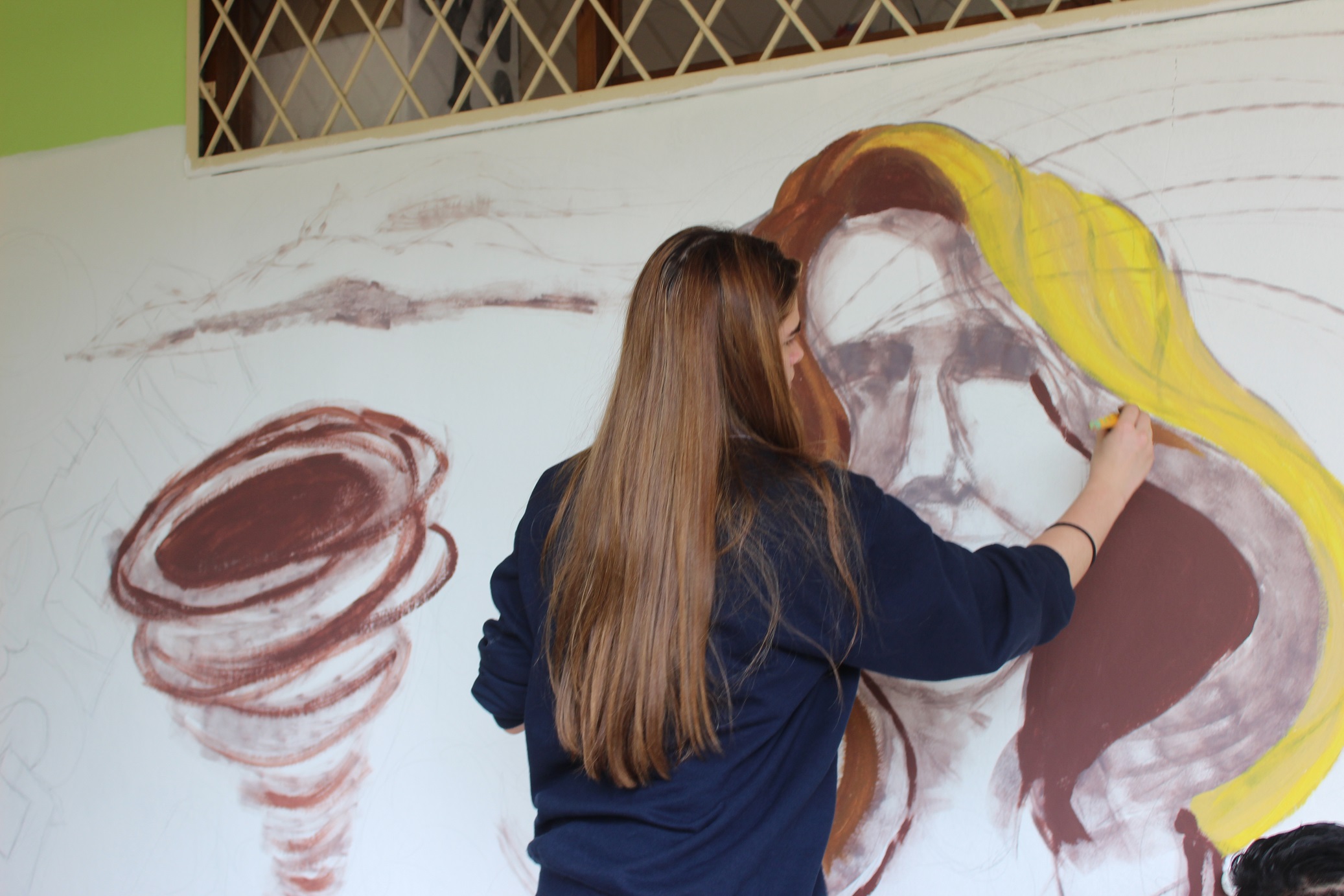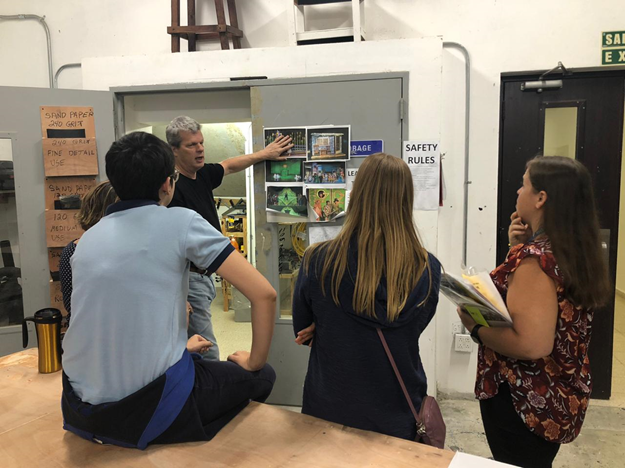Without a doubt, many international schools are taking the creative approach to arts education. They know that the drive to develop and expand Science, Technology, Engineering, and Mathematics (STEM) programs should not relegate the arts to the back seat. It is the STEAM Program that offers students a complete palette of opportunities to develop and grow.
 Research on this topic is not new. In their 2019 article, “10 Salient Studies on the Arts in Education,” The Center for Online Education summarizes conclusions drawn from research within the last two decades. Beyond developing artists, visual and performing arts (VAPA) education increases opportunities for interdisciplinary learning, meaningful critical thinking, social connection, empathy building, persistence in the face of challenges, and much more. Mr. Robert Rinaldo, Director General of Lincoln School, Costa Rica, concurs:
Research on this topic is not new. In their 2019 article, “10 Salient Studies on the Arts in Education,” The Center for Online Education summarizes conclusions drawn from research within the last two decades. Beyond developing artists, visual and performing arts (VAPA) education increases opportunities for interdisciplinary learning, meaningful critical thinking, social connection, empathy building, persistence in the face of challenges, and much more. Mr. Robert Rinaldo, Director General of Lincoln School, Costa Rica, concurs:
“We believe that our students can be great in academics, sports, entrepreneurship and in the arts, and that by being exposed to all areas they will be able to maximize their potential . . . Students have an array of performing and visual arts classes from Pre-K to twelfth grade. Our core program includes theater, visual arts, band, choir, and strings; we also have electives like the Suzuki Program for the elementary students, dance, Art Attack, ceramics, both in our daily and co-curricular programs. Lincoln School has a fully equipped theater where students have the chance to experience not only acting, but also directing, sound editing, set design and other skills related to theater productions.”

Being creative is not just about developing a talent; it is also about developing habits of mind that will ensure the well being and success of every individual—not just artists. Síne Friel, of the Irish National Teachers’ Organisation (INTO), stated in a 2018 Debating Europe post that while hard work and persistence were essential to making art, “the production of great works of art is not, and should not be, the goal of art in education.” VAPA Director Jennifer Tickle says of the International School of Panama (ISP),
“We focus on the skills of collaboration, negotiation, and leadership, which are useful far beyond just studying the arts. . .We make sure that everyone who wishes to be is cast in a production; their work is displayed in the gallery, and they are involved in concerts. With a clear sense of ‘team,’ everyone’s contribution is valuable and essential to the success of what we do. Our facilities allow students to develop back stage skills, building sets, rigging lights, sewing costumes, making props, and stage managing.”
One aspect of creativity is coping with the unknown: developing an inner trust and confidence to solve problems, think differently about a subject, and make something new. These days, the lightning-speed of technological advancement and dissemination of information can feel overwhelming, mysterious, and unsafe. A person trained to think creatively trusts that in the seeming chaos—there are solutions. And you cannot put a price on resilience. In a recent piece about the importance of art education for 21st century learning, artinaction.org said,
"In a world full of trained professionals and highly educated workers, creativity is one of the top skills that set someone apart from the pack. Of course, being qualified in your field is important, but having the ability to think imaginatively and bring fresh ideas to the table are essential to innovation and progress. Art education allows students to express themselves and think outside of the box.”
 Time and again, research has concluded that students involved with the arts build and develop psychological muscle and mettle. Artinaction.org contends that engaging with and presenting one’s art creates a reason to communicate with others about it while also encouraging students to keep striving for more—and better. Like push-ups in PE, newfound confidence builds on itself, and students are more likely to take more risks, “step out of their comfort zones to try new things in other areas of their lives.” Likewise, involvement in the arts often pulls students together for a common purpose. The collaborative nature of the arts compels students to communicate effectively and compromise when necessary—critical skills for the workplace—indeed, for better relationships in general. The development of empathy is another gift of arts education, adds artinaction.org. Students learn about the “daily struggles and realities of people” quite different than themselves. They ultimately discover that “we have more in common than not.”
Time and again, research has concluded that students involved with the arts build and develop psychological muscle and mettle. Artinaction.org contends that engaging with and presenting one’s art creates a reason to communicate with others about it while also encouraging students to keep striving for more—and better. Like push-ups in PE, newfound confidence builds on itself, and students are more likely to take more risks, “step out of their comfort zones to try new things in other areas of their lives.” Likewise, involvement in the arts often pulls students together for a common purpose. The collaborative nature of the arts compels students to communicate effectively and compromise when necessary—critical skills for the workplace—indeed, for better relationships in general. The development of empathy is another gift of arts education, adds artinaction.org. Students learn about the “daily struggles and realities of people” quite different than themselves. They ultimately discover that “we have more in common than not.”
Of course students need a strong foundation in all the core subjects, but without arts education, learning remains incomplete—a hanging thread. Creativity should be a critical component involved in every discipline, not just in arts classes. Adam Herzig, former VAPA Director, International School of Panama agrees:
“Art, drama, and music should never solely exist as stand-alone classes; rather they should flourish as an integral part of the international student experience. The structure of teaching communication, creativity, and collaboration through the visual and performing arts exists on every level, from integration in the science and humanities, to after school programming, and arts requirements for all grade levels. It is important as educators, across divisions and departments, to ensure that [all children have] a chance to express themselves as well as hone the 21st century skills that will give them the compassion and courage to face the unknown of tomorrow.”
Fortunately, international schools are able to integrate the arts into the curriculum in ways that U.S. public schools (for one) cannot, due to budget constraints and focus on testing. Community support of and involvement in international school programs is another advantage. This enables full commitment to the arts on the part of many international schools and results in astonishing programs.
